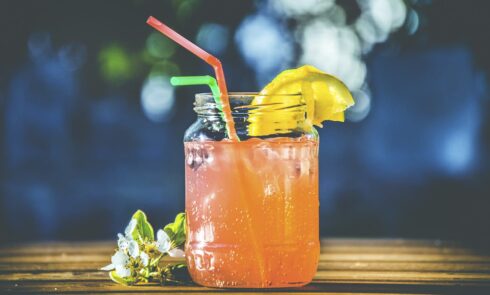Energy drinks are rapidly gaining popularity among young people and schoolchildren. For many students, it is hard to imagine preparing for exams without this miracle elixir.
Advertisements for energy drinks position these products as products that are designed to combat fatigue, which encourages citizens to lead an active lifestyle.
At this stage of development of the soft drink market, the production of energy drinks plays a leading role. Now it is possible to buy them absolutely in any place, beginning from large supermarkets and expensive restaurants, finishing stalls and small bars.
The production of energy drinks on an industrial scale began in Austria in 1984. Dietrich Mateschitz, traveling a lot, found a recipe for a tonic drink, which was the starting point for the development of the company “Red Bull”. Now it is available in more than 160 countries around the world.
Energy drinks are non-alcoholic or low-alcoholic formulations capable of stimulating the central nervous system while increasing human performance. They all position themselves as a “doping” for different groups of people to promote mental performance or physical activity.
The main constituents of energy drinks include:
taurine;
caffeine;
ascorbic acid (vitamin C) and nicotinic acid (PP);
calcium pantothenate (B5);
Pyridoxine (a form of vitamin B6);
folic acid (vitamin B9).
It is such a rich composition and contributes to the active functioning of the central nervous system.
Peculiarities of production of energy drinks
The production of energy drinks has gained great popularity, as they have a number of advantages and advantages.
The high content of caffeine helps students during the session, where it is necessary to learn the maximum amount of information in a small period of time. But energy drinks, which have a huge supply of vitamins and carbohydrates, are suitable for people who spend the lion’s share of time in gyms.
As a rule, all drinks are rich in elements, preferably of the B group. The very high glucose content helps provide energy to muscles, brain and other vital organs. A clear plus of energy drinks is convenient packaging. You can take them with you on trips, to concerts, parties, etc.
One very important thing to remember is that such drinks have no energy. They open the way to the internal reserves of the body. When they are consumed, one borrows energy from oneself. Soon the debt will have to be repaid. Fatigue, insomnia, irritability, depression, apathy will be typical for this period.
All stimulants of the nervous system lead to its depletion. Also, some of them are addictive, which is extremely detrimental to the human psyche. If the permissible dose is exceeded, there are side effects in the form of: palpitations, increased nervousness, irritability, trembling limbs.
Many European countries refuse the free sale of energy drinks. There has also been a great uproar over the lawsuits over several deaths allegedly associated with this category of product.


